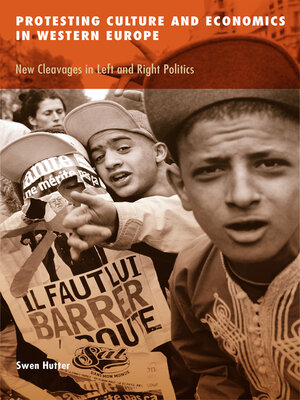Protesting Culture and Economics in Western Europe
ebook ∣ New Cleavages in Left and Right Politics · Social Movements, Protest and Contention
By Swen Hutter

Sign up to save your library
With an OverDrive account, you can save your favorite libraries for at-a-glance information about availability. Find out more about OverDrive accounts.
Find this title in Libby, the library reading app by OverDrive.



Search for a digital library with this title
Title found at these libraries:
| Library Name | Distance |
|---|---|
| Loading... |
In this far-reaching work, Swen Hutter demonstrates the usefulness of studying both electoral politics and protest politics to better understand the impacts of globalization. Hutter integrates research on cleavage politics and populist parties in Western Europe with research on social movements. He shows how major new cleavages restructured protest politics over a thirty-year period, from the 1970s through the 1990s. This major study brings back the concept of cleavages to social movement studies and connects the field with contemporary research on populism, electoral behavior, and party politics.
Hutter's work extends the landmark 1995 New Social Movements in Western Europe, the book that spurred the recognition that a broad empirical frame is valuable for understanding powerful social movements. This new book shows that it is also beneficial to include the study of political parties and protest politics. While making extensive use of public opinion, protest event, and election campaigning data, Hutter skillfully employs contemporary data from six West European societies—Austria, Britain, France, Germany, the Netherlands, and Switzerland—to account for responses to protest events and political issues across countries.
Protesting Culture and Economics in Western Europe makes productive empirical, methodological, and theoretical contributions to the study of social movements and comparative politics. Empirically, it employs a new approach, along with new data, to explain changes in European politics over several decades. Methodologically, it makes rigorous yet creative use of diverse datasets in innovative ways, particularly across national borders. And theoretically, it makes a strong claim for considering the distinctive politics of protest across various issue domains as it investigates the asymmetrical politics of protest from left and right.







